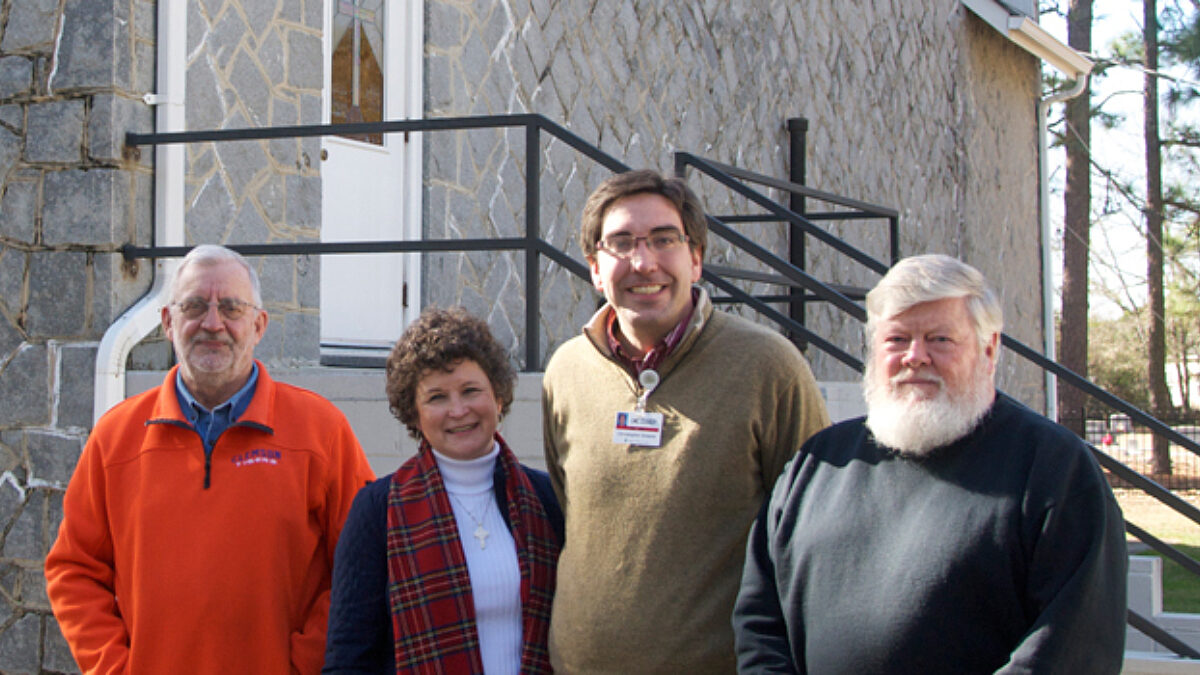
Shiloh embarks on major expansion program to meet growing community
By Jessica Brodie
GILBERT—What do you do when you’re a smallish church in a country community that just happens to be one of the five fastest-growing areas in the state?
If you’re anything like Shiloh United Methodist Church, you take a good, hard look at who (and whose) you are and where you want to go, and take concrete steps to get there.
Shiloh is a 180-year-old church in rural Gilbert that knew it had a problem: it wanted to meet the needs of its community and cultivate new members, but it was running out of room. With 180 members, it had maxed out its building capacity. The sanctuary had ample room, but Shiloh often didn’t have enough space for the youth, choir, children and Sunday school classes to meet at the same time. The bathrooms were small and cramped, and the only handicap-accessible bathrooms were next door in the fellowship building—not ideal.
“We had a challenge: how can we grow if there’s not enough space?” said Shiloh’s treasurer, Jerry Green.
So the church embarked on a time of discernment, researching what other churches were doing, consulting experts, dialoguing with the Columbia District and asking fellow members, “Where do you see our church in five years?”
They ended up not only with a new mission and vision statement that now serves as the core document for everything their church does for Christ, but also a three-phase master expansion plan that members hope will take Shiloh into a God-sized future.
‘How do we fit people?’
The church’s pastor, the Rev. Christopher Greene, came to Shiloh in 2012. At the time, he was told the appointment was an opportunity for revitalization.
“The church was not in a decline, but there’s only one way to go unless something changes, and that is decline,” Rev. Greene said. “There was a desire but not really a guiding vision, and as Scripture says, if there is no vision, people perish. But there was a desire to grow and a desire to reach these demographics. It was obvious we couldn’t continue to do ministries in the ways of the past.”
The treasurer (or as he calls himself, “the Green without an e”) said church members wanted to do God’s will and grow, but they weren’t quite sure where to begin. So they started by asking questions, and it evolved from there.
“Everyone knows we’ve got to engage, got to do something or we’ll be one of those ‘maintaining’ churches on life support,” Green said.
In time, they crafted a church-wide mission—“to reach out to the community with the love of God, enabling all people to know, embrace and serve Jesus as Lord and Savior”—and vision.
Then it was strategy time, said Max Young, chair of the church board of trustees. They began to look intentionally at real ways to grow the church and soon realized that growth would require more room.
“The space issue really opened our eyes,” said Mary Baker, incoming chair of the church council. “It became, ‘How do we fit people?’”
The church formed a building committee, and plans soon developed for a three-phase expansion, Young said. Phase One, at a cost of roughly $620,000, would address the church’s immediate space needs: adding on space to the back of the sanctuary for handicap-accessible bathrooms, classrooms for children and adults, a pastor’s office and a little more room in the sanctuary.
Phases Two and Three will involve further expansion, better parking and the addition of multi-purpose areas.
They are seeking a district grant for Phase One and knew they needed to raise 20 percent of the expansion cost to apply for that grant, so they began to work toward fundraising.
All seemed full speed ahead—until the flood of October 2015.
A stumbling block
The flood caused what Young called a huge “stumbling block.”
While the momentum for the expansion was high in the church, when the basement flooded not just once but twice, it made them take a step back and turn to God for a double-check: are we doing the right thing?
The church basement is situated four feet below ground, and it houses the Sunday school, children, youth and nursery rooms, as well as the bathrooms. They had flood insurance, but then when the second flood occurred, they knew the problem would repeat itself. As Young said, they needed to fix the problem or abandon the basement entirely.
They decided to put in a drainage system around the perimeter of the church, and they couldn’t use the basement for six months. And in time, the flood proved to be a test they passed.
“We got through, back on track, and if anything, it spurred us on,” Young said.
Trusting God, stepping up
Green said the church decided to take “a leap of faith” and get a loan to finish the work on the basement while they continued raising funds for the full expansion.
The church stepped up in a big way, he said. They set a goal of raising $124,500 (20 percent) by Oct. 31, 2016, and they exceeded that goal, ultimately raising $136,000. They also finished fixing the basement in January, and they are working hard toward paying off the basement loan while simultaneously raising even more funds for the expansion.
They are currently in the process of applying for district and conference congregational development grants and other grants, researching financing options and raising private funds from individuals and businesses, including fundraising bricks.
They are hoping Phase One of the expansion will be done within the year.
“Now all we need to do is trust God and His leadership, and it’ll happen,” Green said.
For more on the project, visit www.shilohumc.church.